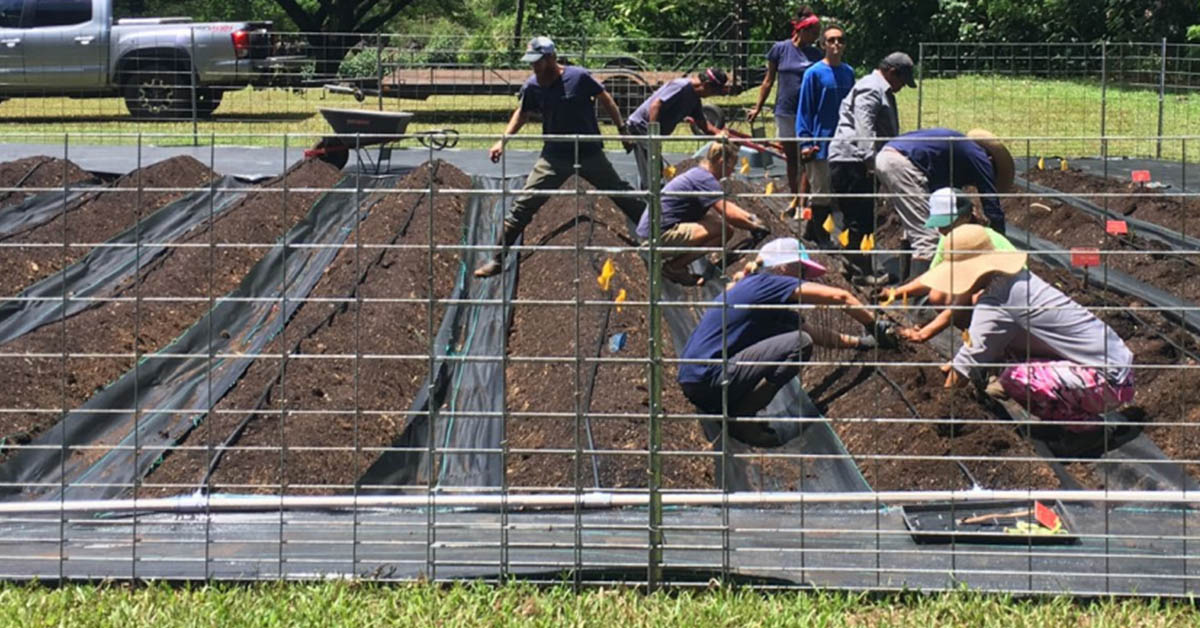Here comes Peter Cottontail, hoppin’ down the bunny trail, hippity hoppity Easter’s on its way! Spring is in the air and now is the perfect time to get ready to plant. The wet humid weather and increasing daylight ensures that plants will be happy, healthy, and vigorous. Planting during the spring season can ensure that when the dry weather of the summer comes around, plants will be established and capable of withstanding the dry heat of the summer months. Many of the same practices we use at Waimea Valley can be helpful for your own yard or garden.
In order to ensure the success of planting, it is a good idea to harden off/acclimate seedlings or nursery plants to outside conditions before planting. At Waimea Valley, we have an open air outdoor area that we put plants in before they go into the ground. At home you can start by finding a good spot for your plant and see how well it tolerates the area. If the plant is not use to full sun it is a good idea to keep it in partial shade and gradually increase the amount of sun the plant receives each day until it can flourish in the sunlight. Watch the plant for signs of wilting or sunburned/discolored leaves in the early stages. Increased water can also help many plants deal with the stress of increased sunlight. It is best practice to find out the requirements of each plant before planting to ensure success.
Prep your planting area by amending the soil accordingly. If the plant is a hungry feeder it may be a good idea to evenly incorporate compost to the soil. If you don’t have a compost pile in your yard, Hawaiian Earth Products located in Wahiawa is a great place to get some cheap high quality compost in bulk and most home improvement stores carry the Menehune Magic pre-packaged bag of compost, which is a bit more costly but just as effective for boosting your soil. If the plant requires well drained soil then incorporate black cinders, sand, or perlite into the soil to help avoid waterlogged conditions which can inhibit root growth. Using beach sand is a bad idea as the salts present in the sand can damage plant roots and lead to long lasting salinity issues that are difficult to correct. Avoid planting in areas where water tends to pool unless the plant is thirsty and can tolerate wet roots for long periods.
Local varieties of commonly grown produce seeds can be purchased from the UH Seed Program located at the UH Manoa campus or online at www. ctahr.hawaii.edu/seed. Some plants to start now include: cabbage, broccoli, eggplant, green onions, cherry tomatoes, kai choy, yard long bean, and snow peas. Heading into April, it is a good idea to start planting daikon, okra, peppers, beets, pak choi, ginger, olena, and arugula. When May rolls around plants such as tatsoi, radishes, and basil are good to grow. Spacing varies depending on what you are trying to grow but a good rule of thumb is to space things out about one shaka (or two, if you have small hands) apart from each other. Climbing plants such as beans, bitter melon, or lilikoi will require a trellis to grow on so be sure to provide a sturdy one near the plant. Be sure to water immediately after planting and then again for the next couple of days. At Waimea Valley we water newly planted specimens for at least a week to ensure proper establishment. Good luck and happy growing!



